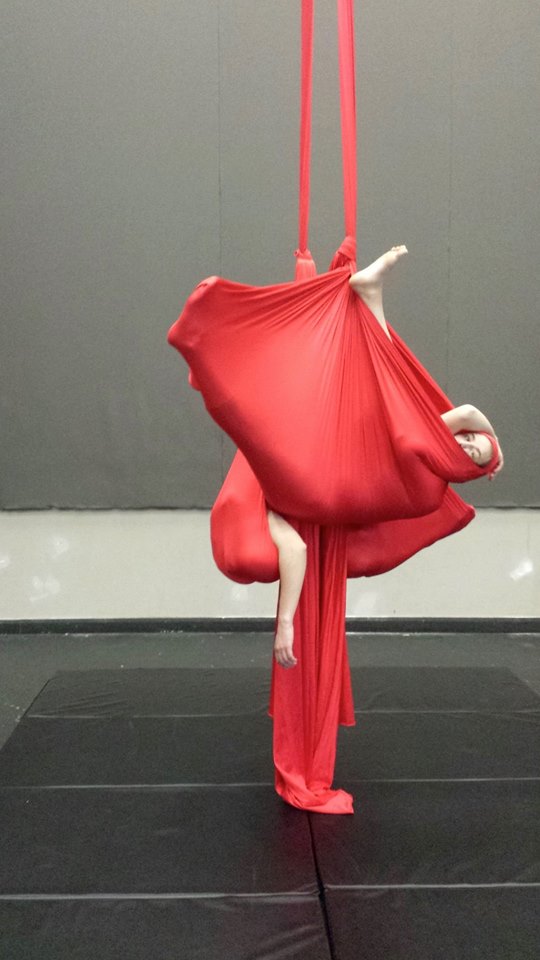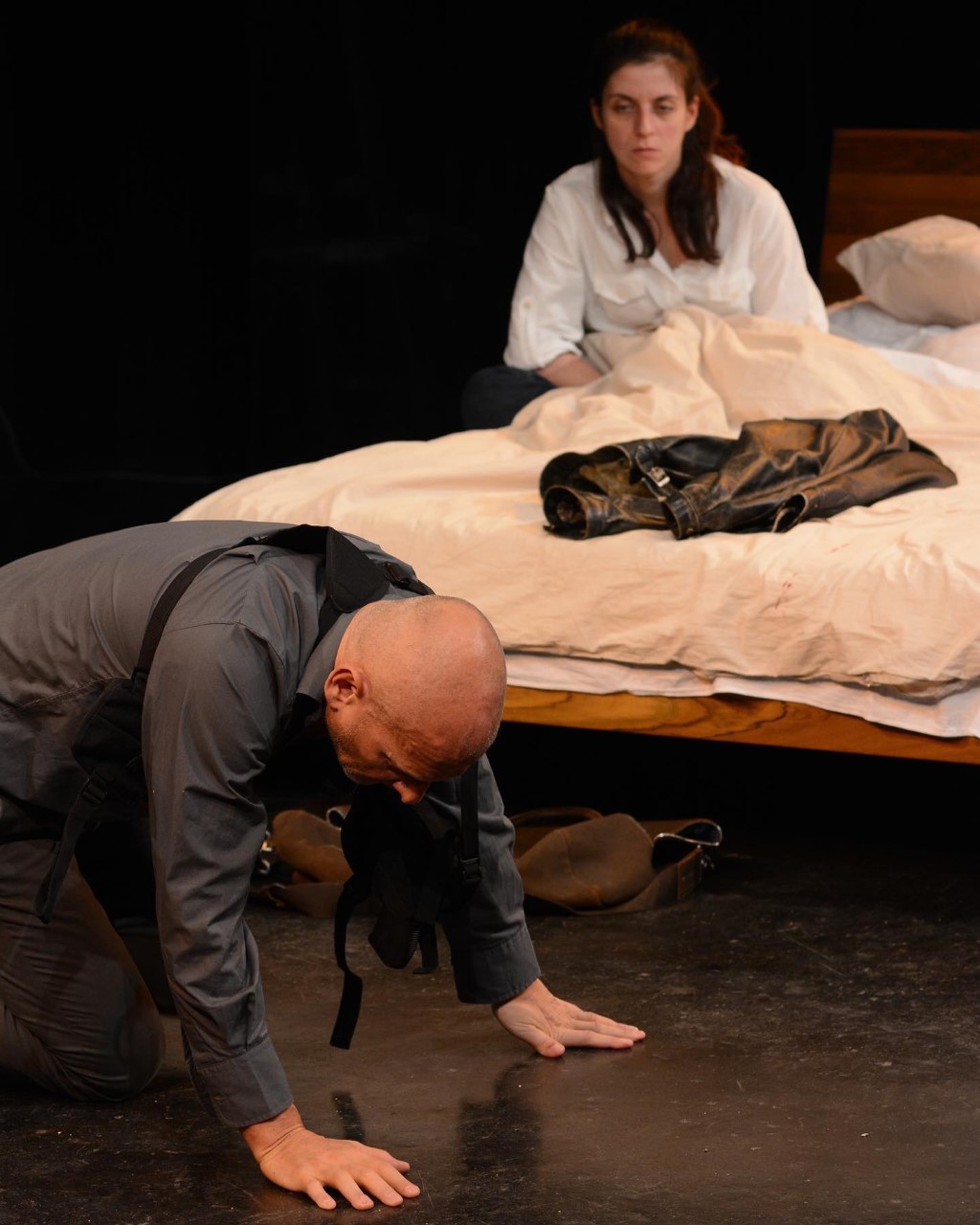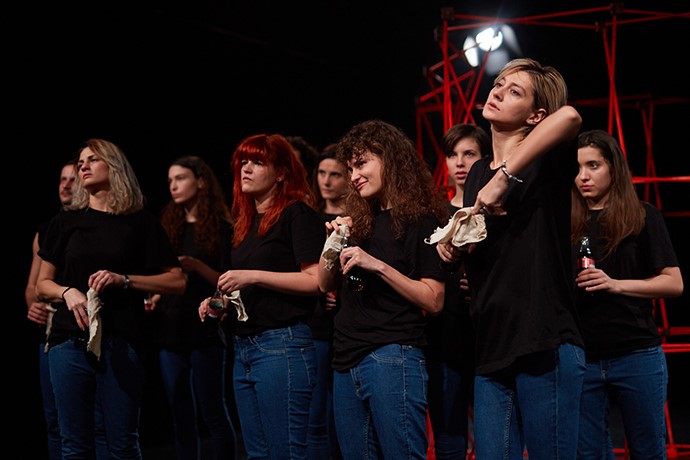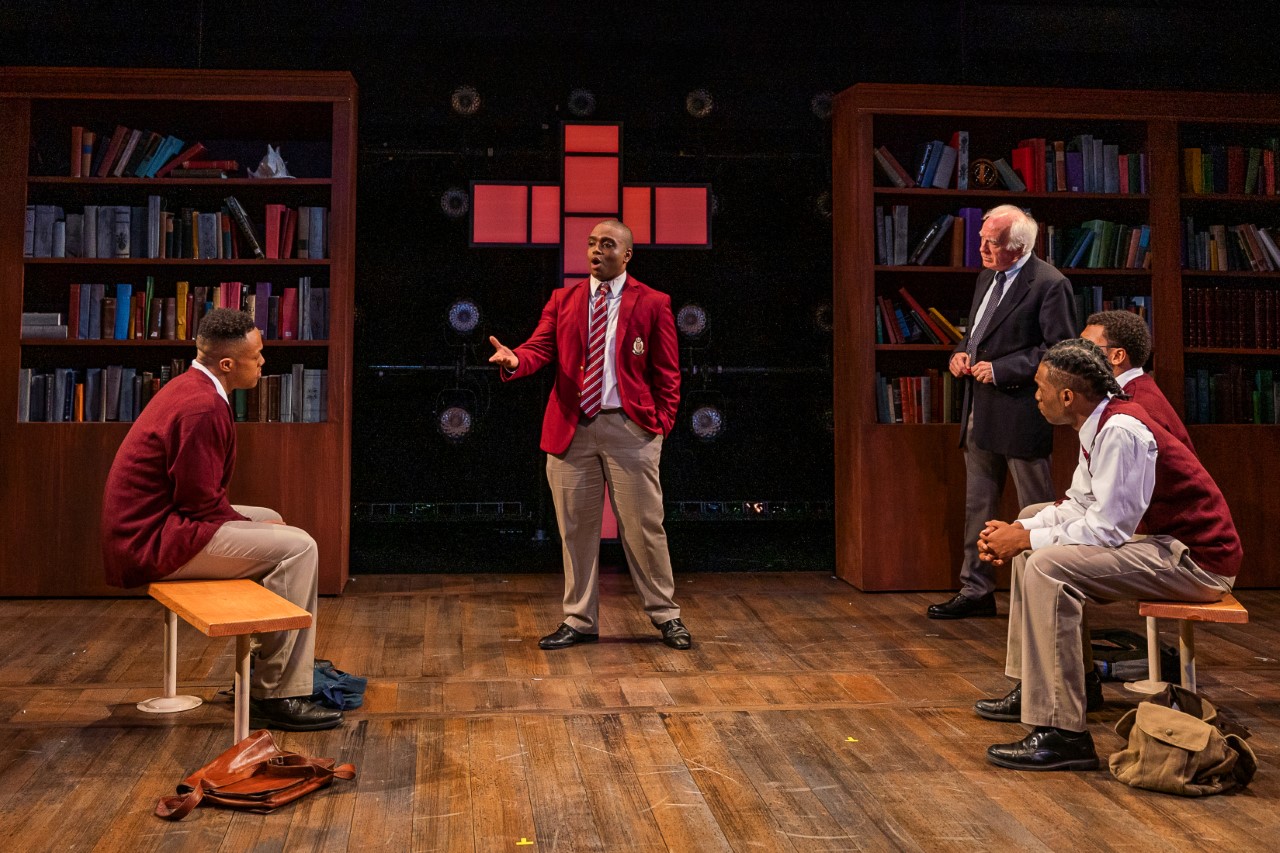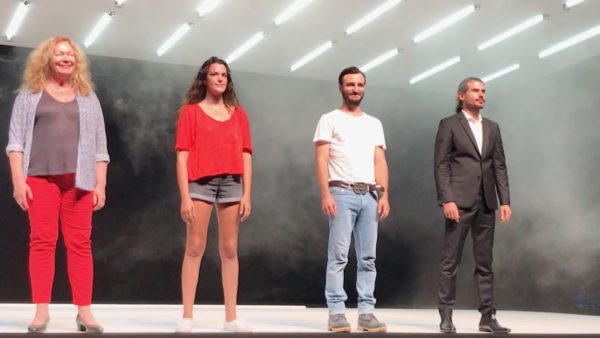
De Magali Mougel : « Suzy Storck » et «Lichen »
De tous les spectacles vus cet été, il me restera indélébile, comme un souvenir stupéfait, les images, la colère et les mots de « Suzy Storck », une pièce écrite par Magali Mougel, jeune dramaturge rentrée au bercail après diverses pérégrinations. Bien lui en prit puisque Simon Delétang a choisi de la mettre en lumière, aux côtés de Calderón de la Barca, renouant par-delà le temps avec la « tradition Pottecher », qui voulait voir chaque année en ce théâtre une production dramatique du cru. Mais non content d’assumer la mise en scène, le directeur du Théâtre du Peuple a décidé d’être présent sur le plateau, aux côtés de ses trois acteurs incarnant Suzy, sa mère et son mari, pour y tenir à lui seul le rôle du chœur. Grave et noir choryphée de lui-même, et sans émotion apparente mais adoptant le ton, la posture et le costume sombres de la tragédie, il commente les faits, guide notre appréhension et notre compréhension de l’histoire.
Car Suzy Storck, personnage éponyme, est bien l’héroïne d’une tragédie ordinaire, mais qui n’a de banal que l’apparence. Sur la scène une machine à laver, mobile, dont seront extirpés quelques éléments de costume nécessaires à la figuration, et dont la présence se justifiera d’autant mieux que Suzy à un moment déclarera n’être pas cet appareil ménager, symbole du rôle auquel on voudrait la contraindre. Le terril de linges colorés dressé côté cour n’en semble que plus cohérent, qui deviendra aussi la couche où accrocher, se donnant le dos, le couple de Suzy et Hans Vassili Kreuz embourbé dans son incompréhension et son impossibilité nocturne à communiquer. …
Read More Read More
